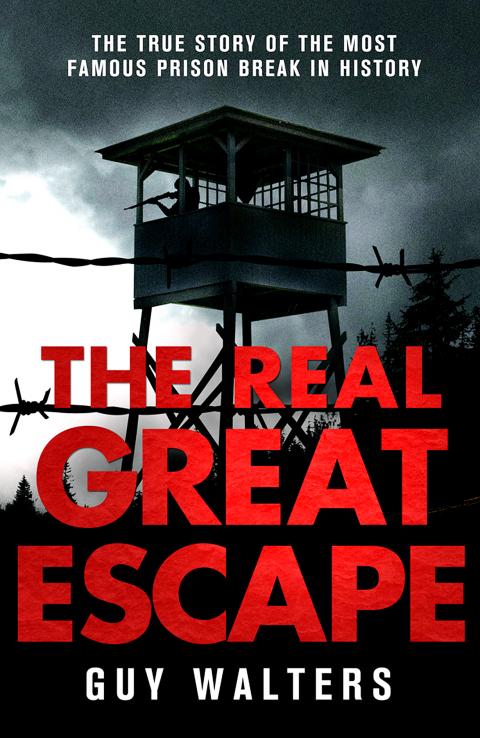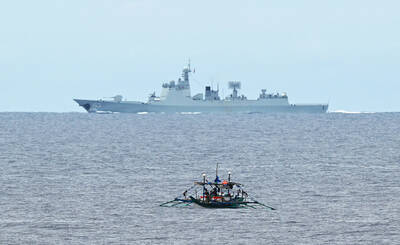It takes courage to demolish a cherished icon, and when that icon is the film The Great Escape, the iconoclast needs steel nerves worthy of the escapers themselves. But that is what Guy Walters achieves in his new study of World War II’s most famous mass breakout, which, far from being a rehash of an oft-told tale, is a clear-eyed inquiry into a myth that does not stand up to examination.
What Walters claims is missing from the film, with its jaunty theme tune and boy-scout characters, is that this was essentially a story of mass murder. His focus is not so much on the heroic ingenuity of the PoWs tunneling themselves out of their camp, but on their ultimate destination. Fifty of the 76 escapees were summarily shot by the Gestapo on Hitler’s orders, and only three (none British) made a successful “home run” to Britain. Was the sacrifice really worth it, Walters asks. His answer is a resounding “No.”
The central figure in Walters’s story is the escape’s inspiring leader, Squadron Leader Roger Bushell (played as “Roger Bartlett” in the film by Richard Attenborough). Bushell was a driven character: charismatic, determined, stubborn, perhaps a little crazy. The son of a mining magnate in South Africa, idolized by his mother, he had an English public school and Cambridge education. He drove fast cars, dated “popsies” and excelled at skiing. Characteristically, he tended to ski over obstacles in his path rather than around them. A skiing accident gashed his face, which lent his appearance a sinister aspect.

Though neglecting his studies for sport, Bushell was no fool; he was proficient in several languages and, despite an indifferent degree, was called to the bar and got several murderers off capital charges. He learned to fly as a hobby, and when war came, found himself commanding a Spitfire squadron. After downing two enemy planes, he was himself shot down over France and captured.
Bushell made two initial escapes — on the second occasion, accompanied by a Czech fellow flier, he reached occupied Prague and spent several months hidden by a Czech family. However, in the manhunt that followed the 1942 assassination of SS overlord Reinhard Heydrich, Bushell’s hiding place was betrayed. The Czechs who had sheltered him were shot, and Bushell himself was roughly handled by the Gestapo.
After this experience, he could have had no illusions about the ruthlessness of the Nazis, and his suffering seems to have sharpened his already intense hatred of his tormentors and his desire to escape them.
Arriving at Stalag Luft III, the huge new camp built for allied flying officers in a gloomy Polish forest, Bushell instantly initiated his plan for a mass breakout, starting three simultaneous tunnels nicknamed Tom, Dick and Harry, on the premise that if one failed and another was discovered, then the third would surely succeed. It says much for Bushell’s drive and leadership skills that the vast organization required to dig the tunnels, dispose of the conspicuous yellow sand displaced by the digging, and to manufacture an enormous array of clothes, passes and other documentation for 200 escapees remained secret.
Walters’s description of the build-up to the breakout makes nail-biting reading. Bushell knew he was risking death, and realized that the vast majority of the fellow escapees — most of whom spoke no German and still wore uniforms unconvincingly disguised as civilian clothes — stood no chance of getting away across thick snow. Bushell justified his grand plan, however, by arguing that hunting such a vast number of escapees would divert German resources from the war. Walters shows, though, that the escape did nothing whatever to hinder the German war effort.
Along with indicting Bushell’s irresponsibility, Walters reveals the extent to which the camp was effectively controlled by its inmates. It was nominally run by senior Luftwaffe officers who had sympathy for their charges and feared the encroaching power of the Gestapo. On a lower level of command, the poor quality of the lesser German guards made them susceptible to bribery and blackmail.
By this stage in the war (1943-1944) Germany was running short of resources, and the prisoners, kept supplied by generous Red Cross parcels, had more food, drink, tobacco and other creature comforts than their guards. Many of the aids used in the escape — passes, uniforms, stamps — were genuine rather than forgeries, smuggled into the camp by suborned guards.
Walters underlines repeatedly that the Germans at the camp, from the commandant Von Lindeiner down, were explicit in warning the Kriegies of dire consequences if they were caught on the wrong side of the wire and fell into Gestapo hands. Bushell disregarded these warnings, and for this, Walters finds him culpable for his own murder and those of his comrades. The great escape, he sadly concludes, was a great folly.

Late last month Philippines Foreign Affairs Secretary Theresa Lazaro told the Philippine Senate that the nation has sufficient funds to evacuate the nearly 170,000 Filipino residents in Taiwan, 84 percent of whom are migrant workers, in the event of war. Agencies have been exploring evacuation scenarios since early this year, she said. She also observed that since the Philippines has only limited ships, the government is consulting security agencies for alternatives. Filipinos are a distant third in overall migrant worker population. Indonesia has over 248,000 workers, followed by roughly 240,000 Vietnamese. It should be noted that there are another 170,000

Hannah Liao (廖宸萱) recalls the harassment she experienced on dating apps, an experience that left her frightened and disgusted. “I’ve tried some voice-based dating apps,” the 30-year-old says. “Right away, some guys would say things like, ‘Wanna talk dirty?’ or ‘Wanna suck my d**k?’” she says. Liao’s story is not unique. Ministry of Health and Welfare statistics show a more than 50 percent rise in sexual assault cases related to online encounters over the past five years. In 2023 alone, women comprised 7,698 of the 9,413 reported victims. Faced with a dating landscape that can feel more predatory than promising, many in

“This is one of those rare bits of TikTok fitness advice with a lot of truth behind it,” says Bethan Crouse, performance nutritionist at Loughborough University. “Sometimes it’s taken a bit too literally, though! You see people chugging protein drinks as they’re scanning out of their gym.” Crouse recommends the athletes she works with consume 20-30g of protein within 30-60 minutes of finishing a resistance training session. “The act of exercising our muscles increases the breakdown of muscle proteins,” she says. “In order to restore, or hopefully improve them — and get gains such as increased muscle mass or strength —

“Far from being a rock or island … it turns out that the best metaphor to describe the human body is ‘sponge.’ We’re permeable,” write Rick Smith and Bruce Lourie in their book Slow Death By Rubber Duck: The Secret Danger of Everyday Things. While the permeability of our cells is key to being alive, it also means we absorb more potentially harmful substances than we realize. Studies have found a number of chemical residues in human breast milk, urine and water systems. Many of them are endocrine disruptors, which can interfere with the body’s natural hormones. “They can mimic, block